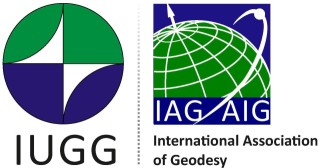A redistribution of mases in the fluid layers of the Earth, e.g., in oceans, atmosphere, cryosphere and land hydrology, induces changes in the center of mass of surface loads which can be observed as a translation of the solid Earth relative to the center of satellite orbits. By definition, the international terrestrial reference system (ITRS) shall be geocentric, i.e., with the origin in the center of mass being defined for the whole Earth, including oceans and atmosphere. However, due to the surface mass redistribution, Earth's center of mass varies unceasingly. The practical realization of the ITRS situates the origin in the mean position of the center of mass from the long-term analysis using geodetic techniques which are, on the one hand, most sensitive to the Earth's center of mass, and on the other hand least perturbed by external forces.
Geocenter motion is typically defined as an instantaneous translation vector of the origin between two terrestrial reference frames. One frame has its origin in the Earth's center of mass and determines the Earth satellites' motion as being coincidental with the orbital focal point of artificial satellites. The second frame is realized by a subset of international terrestrial reference frame core stations whose coordinates can be considered as well-determined and reliable. Theoretically all satellite techniques can be used for the estimation of the geocenter motion. However, recovery of geocenter motion using DORIS or GNSS data is challenging due to orbit modelling issues for satellites equipped with large solar panels, modeling of the signal delay in the atmosphere, estimating clock parameters, biases or forming double differences of observations. SLR constitutes currently the best technique for the recovery of the geocenter motion, however, geocenter motion estimated from SLR suffers from the inhomogeneous distribution of SLR stations, which cause a substantial network effect, and some correlations between estimated empirical orbit parameters and the Z component of the geocenter. Moreover, the geocenter motion cannot be properly derived from SLR data when only the global translation vector is estimated without accounting for relative station displacements caused by surface load density variations. As the mass redistribution influences not only on the translation parameter of the Earth's center of mass, but also on surface loads causing the relative displacements between ground stations, the geocenter motion can indirectly be observed by all techniques capable of determining station coordinates: VLBI, GNSS, SLR, and DORIS. Moreover, GRACE K-band observations, despite being insensitive to direct translations of the reference frame origin, can support the recovery of the geocenter motion by complementing load surface displacements in the areas with no core stations. This study will summarize all space geodetic techniques and methods used for the recovery of the geocenter motion with a discussion of limitations, challenges, and prospects of alternative and supporting techniques of the determination of the geocenter motion.

 PDF version
PDF version
